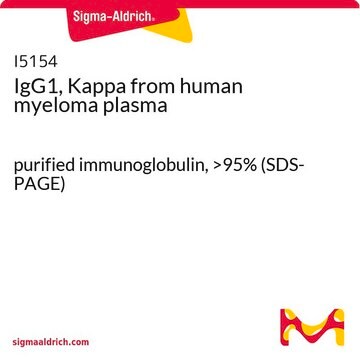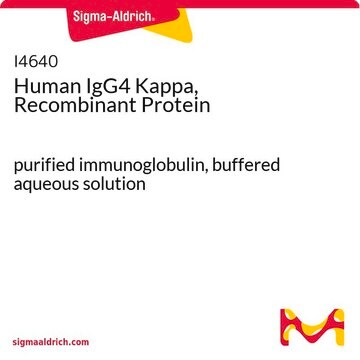I5029
IgG1, Lambda from human myeloma plasma
purified immunoglobulin, >95% (SDS-PAGE)
Synonyme(s) :
Human IgG1-λ
About This Item
Produits recommandés
Source biologique
human
Niveau de qualité
Conjugué
unconjugated
Forme d'anticorps
purified immunoglobulin
Pureté
>95% (SDS-PAGE)
Conditions d'expédition
dry ice
Température de stockage
−20°C
Vous recherchez des produits similaires ? Visite Guide de comparaison des produits
Description générale
Human myeloma IgG1, λ is purified from human plasma by fractionation, ion-exchange, and affinity chromatography procedures.
Application
Forme physique
Remarque sur l'analyse
Clause de non-responsabilité
Code de la classe de stockage
10 - Combustible liquids
Classe de danger pour l'eau (WGK)
WGK 1
Point d'éclair (°F)
Not applicable
Point d'éclair (°C)
Not applicable
Certificats d'analyse (COA)
Recherchez un Certificats d'analyse (COA) en saisissant le numéro de lot du produit. Les numéros de lot figurent sur l'étiquette du produit après les mots "Lot" ou "Batch".
Déjà en possession de ce produit ?
Retrouvez la documentation relative aux produits que vous avez récemment achetés dans la Bibliothèque de documents.
Les clients ont également consulté
Notre équipe de scientifiques dispose d'une expérience dans tous les secteurs de la recherche, notamment en sciences de la vie, science des matériaux, synthèse chimique, chromatographie, analyse et dans de nombreux autres domaines..
Contacter notre Service technique









